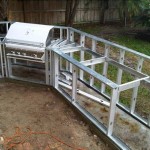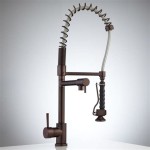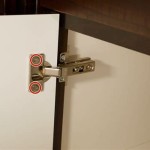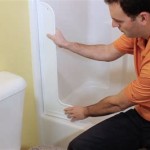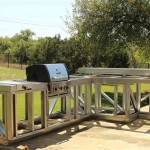A kitchen faucet hose can be a source of frustration when it starts to leak or become clogged. Fortunately, with the right tools, supplies, and know-how, you can easily repair a kitchen faucet hose and save yourself time and money. In this article, we will discuss the steps for repairing a kitchen faucet hose, as well as provide helpful tips for keeping your hose in top condition.
Steps for Repairing a Kitchen Faucet Hose
Repairing a kitchen faucet hose requires the following steps:
- Turn off the water supply to the faucet.
- Remove the old hose.
- Inspect the hose for damage or wear-and-tear.
- Clean the hose and the faucet connection.
- Replace the old hose with a new one.
- Turn on the water supply and test the faucet.
Before beginning the repair process, make sure to gather the necessary tools and supplies, such as a wrench, pliers, a new kitchen faucet hose, and a pair of gloves. Also, it is important to remember to turn off the water supply to the faucet before you start.
Tips for Keeping Your Kitchen Faucet Hose in Top Condition
In addition to repairing a kitchen faucet hose, there are a few things you can do to keep it in top condition. These tips include:
- Regularly inspect the hose for wear-and-tear.
- Clean the kitchen faucet hose and the faucet connection regularly.
- Replace old or worn out hoses with new ones.
- Ensure that the hose and connection are securely connected.
- Be mindful of the temperature and pressure of the water supply.
By following these tips, you can help ensure the longevity of your kitchen faucet hose and avoid future problems or leaks. If you do encounter any problems, remember that you can always repair or replace the hose yourself.
Conclusion
Repairing a kitchen faucet hose is a relatively simple process that anyone can do with the right tools and supplies. By following the steps outlined above, you can easily repair a kitchen faucet hose and save yourself time and money. Additionally, by following the tips for keeping your kitchen faucet hose in top condition, you can ensure its longevity and reduce the likelihood of future problems or leaks.













Related Posts

